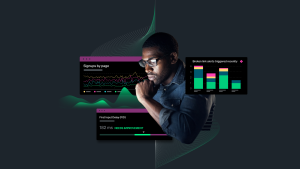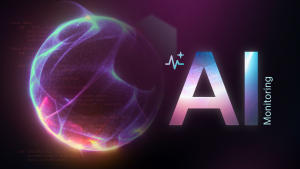In the last 40 years, I’ve seen three truly disruptive technologies: the world wide web in the early 1990s, Steve Jobs’ introduction of the iPhone in 2007, and ChatGPT in late 2022, now the fastest growing app in history.
All three of these technologies share one common trait: they are limitless innovation fractals. In other words, the closer you look and the more you think about how they can be applied to different industries, businesses, and use cases, the larger the number of ideas that are generated, and the ideas seem to go on forever. Limitless innovation leads to massive value creation opportunities, as trillions of dollars of shareholder value have been realized in the decades since the web and the iPhone debuted.
The pace of innovation continues to increase, driven by innovation itself, creating a virtuous cycle of acceleration. Consider that it took the world wide web seven years to reach 100 million users, the iPhone app store 2+ years, and ChatGPT a mere two months.
When the web and the iPhone appeared on the scene, they forced businesses to adopt new ways of interacting with their customers by investing in websites and mobile apps and reimagining business processes along the way. This created opportunities for companies like New Relic to help the world build better applications. And similar to the web and the iPhone, generative AI is causing companies to work hard and act fast to build out their AI strategy. New Relic is well positioned to help them.
The power of generative AI
Generative AI refers to artificial intelligence models that can generate new data based on existing patterns. These models can create anything from realistic images to coherent text, opening up a world of possibilities across various industries. They can also synthesize and understand data at a pace and scale several orders of magnitude more efficiently than existing solutions. Just like the web and the iPhone before, generative AI promises to bring about a new wave of innovation and create new opportunities for businesses and consumers alike.
This blog post will explore the power of generative AI and its potential to radically impact the observability industry in two fundamental ways:
- Improving the ability to deliver actionable insights to customers based on the telemetry data from their systems.
- Shaping the way companies build and maintain their own generative AI systems and capabilities.
What is AI observability?
AI observability is the ability to monitor, measure, and understand the behavior and performance of artificial intelligence (AI) systems in real time. It is a concept that has gained prominence as AI systems become more complex and integrated into various applications and industries. The goal of AI observability is to provide insights into the inner workings of AI models, helping developers, data scientists, and operators to identify and address issues, optimize performance, and ensure the reliability and robustness of AI systems.
Why is AI observability important?
AI observability is crucial for several reasons, especially as AI systems are integral to various applications and industries. Here are key reasons why AI observability is essential:
Performance monitoring and optimization
AI observability allows continuous monitoring of key performance metrics, such as accuracy, latency, and resource utilization. Understanding how AI models perform in real-world scenarios helps organizations enhance efficiency and deliver better user experiences.
Issue detection and troubleshooting
Real-time monitoring and logging enable the quick detection of issues or anomalies within AI systems. With detailed logs and metrics, developers and operators can troubleshoot problems, identify root causes, and implement timely solutions.
Enhanced robustness and reliability
AI observability contributes to the robustness and reliability of AI systems by providing insights into their behavior under different conditions. This is particularly important in dynamic environments where data distributions may change over time. Understanding how models respond to variations in input data helps ensure that AI systems maintain accurate and reliable performance.
Compliance and governance
Observability features, such as traceability and explainability, support organizations in meeting regulatory and compliance requirements. Being able to trace the flow of data through the AI system and providing explanations for model decisions are essential for ensuring transparency and accountability, particularly in industries with strict regulatory frameworks.
Quick response to changes
As AI systems evolve and adapt to new data, observing their behavior becomes essential for adapting to changes. AI observability enables organizations to quickly respond to shifts in data patterns, model drift, or changes in the environment. This agility is crucial for maintaining the effectiveness of AI applications over time.
Generative AI and the observability industry
As we continue to witness the rapid advancement of generative AI, it becomes crucial for the observability industry to adapt and evolve to meet new challenges and opportunities. Here are two key ways generative AI will reshape the observability industry.
1. Generative AI will change the way we deliver actionable insights.
Generative AI can analyze vast amounts of data quickly and efficiently, enabling businesses to make more informed decisions. This allows companies to address potential bottlenecks and optimize their software systems for better performance.
Generative AI can also help automate repetitive tasks and optimize workflows, streamlining the observability process and saving valuable time and resources.
Generative AI can dramatically simplify access to deep insights, no longer requiring expert knowledge of sophisticated query interfaces, democratizing the power of observability to every application developer, SRE, product manager, and QA engineer.
Integrating these AI capabilities into our products, we can help businesses optimize their software systems and reduce the time spent on diagnosing and resolving issues.
2. Companies will need to develop their own AI strategies to stay competitive.
Just as the internet and smartphones have shaped modern business strategies, generative AI will soon become an integral part of every company's growth plan, and organizations will need to adapt and innovate to stay competitive in this new era of AI-driven technology, or risk being left behind.
As companies rush to implement generative AI capabilities, they’ll need to invest in observability products to maintain and monitor these new capabilities. Prompt engineering, competing large language models, fine-tuning, and feedback loops are all essential components to delivering an exceptional user experience. Each of these advances will also drive demand for advanced observability solutions that cater to the unique challenges posed by AI-driven technologies.
Observing generative AI capabilities
To meet the coming demand, observability solutions must be equipped to handle the complexity and scalability of AI systems. And they must ensure ethical and responsible AI use, which will require a new set of tools and frameworks to implement governance.
At New Relic, we are already developing AI-specific observability solutions that can empower companies to build and maintain reliable AI systems. This will involve continuous innovation, research, and collaboration with all types of developers, product managers, and researchers.
As generative AI continues to gain traction, the observability industry must be prepared to adapt and evolve. This means embracing new technologies, fostering partnerships, and staying ahead of the curve to ensure businesses can effectively build, monitor, and optimize their generative AI capabilities.
The Great Reshuffle is coming
Every industry is being transformed by the power of generative AI as we speak. Governments are noticing, VCs are funding AI innovation, and a whole new natural language interface is redefining our relationships with machines. Startups will emerge that will reimagine what can be done with generative AI and its evolutionary trajectory, and they will disrupt market leaders, who will be faced with hard choices about the sustainability of their current business models.
As we embrace this new wave of innovation, it is essential for observability companies to stay at the forefront of this technological shift, helping drive growth and change as this digital transformation accelerates every industry. Those who master its application will be the new market leaders, and those who resist will be left behind. That will lead to the Great Reshuffle in the next several years, and AI-powered approaches will establish the new ranking.
The transformative power of generative AI is undeniable, and its potential to reshape the observability industry is immense. Observability companies ingest massive amounts of data and provide analytics, reports, and alerts to help their customers identify patterns, anomalies, and predictions from that data. That is what AI models are designed to do better than humans, and the engines powering the models and the models themselves are getting exponentially faster and more powerful. It is unavoidable that AI will play a central role in observability and that customers will demand the functionality that can only come from AI-powered observability solutions. By integrating AI capabilities into our offerings and developing tailored observability solutions, we hope to lead observability to its next phase, thereby expanding its reach and importance in the software development life cycle.
Generative AI is already reshaping business, culture, creativity, and communication. It is touching every aspect of our lives. As it does, it will also reshape the observability industry. By embracing this technology and its immense potential, we can foster a more connected, efficient, and innovative world for all.
Next steps
Learn how New Relic is leading the way with observability and generative AI:
- Discover New Relic AI, the first GenAI observability assistant.
- Monitor OpenAI GPT application usage with New Relic.
- Check out these integrations to monitor your full AI stack.
Don't have New Relic yet? Sign up for a free account. Your account includes 100 GB/month of free data ingest, one free full-platform user, and unlimited free basic users.
The views expressed on this blog are those of the author and do not necessarily reflect the views of New Relic. Any solutions offered by the author are environment-specific and not part of the commercial solutions or support offered by New Relic. Please join us exclusively at the Explorers Hub (discuss.newrelic.com) for questions and support related to this blog post. This blog may contain links to content on third-party sites. By providing such links, New Relic does not adopt, guarantee, approve or endorse the information, views or products available on such sites.



